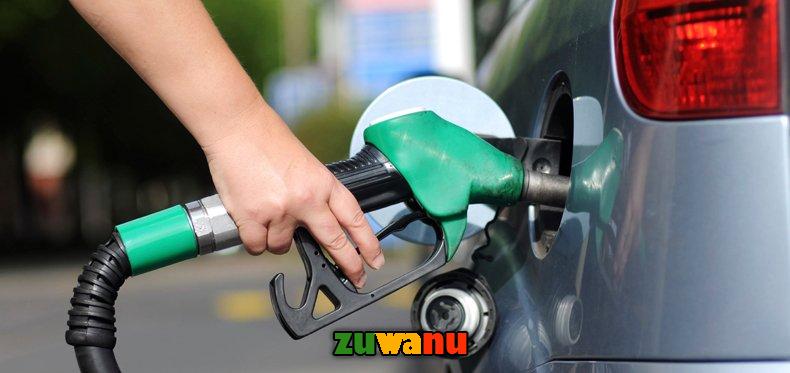Optimizing Fuel Efficiency: A Comprehensive Guide to Reducing Fuel Consumption
Table of Contents
Introduction: Optimizing Fuel Efficiency
With the increasing concerns about environmental sustainability and rising fuel costs, optimizing fuel efficiency has become a paramount goal for both individuals and businesses. Reducing fuel consumption not only benefits the environment by curbing carbon emissions but also helps individuals and businesses save money in the long run. In this comprehensive guide, we will explore a range of tips and strategies to minimize fuel consumption and promote a more sustainable and economical approach to transportation.

I. Efficient Driving Habits:
- Smooth Driving: Aggressive driving, such as rapid acceleration and abrupt braking, can significantly reduce fuel efficiency. Adopting a smoother driving style not only enhances safety but also conserves fuel. Gradual acceleration and deceleration allow the engine to operate more efficiently.
- Maintain a Consistent Speed: Driving at a consistent speed on highways and main roads helps to optimize fuel consumption. Using cruise control whenever possible can contribute to maintaining a steady pace and minimizing unnecessary fuel consumption due to frequent speed changes.
- Avoid Excessive Idling: Idling consumes fuel without any actual mileage gained. If you anticipate being stationary for more than a minute, it is more fuel-efficient to turn off the engine and restart when needed.
- Proper Gear Usage: Using the right gear at the right time is crucial for fuel efficiency. Shifting gears at the recommended RPM (revolutions per minute) ensures that the engine operates optimally and consumes fuel more efficiently.
II. Vehicle Maintenance:
- Regular Engine Maintenance: A well-maintained engine operates more efficiently and consumes less fuel. Regularly check and change the engine oil, air filters, and spark plugs according to the manufacturer’s recommendations.
- Proper Tire Maintenance: Underinflated tires increase rolling resistance, requiring more fuel to maintain speed. Regularly check and maintain the recommended tire pressure to optimize fuel efficiency. Also, consider using low-rolling-resistance tires.
- Wheel Alignment and Balancing: Misaligned wheels can increase rolling resistance and reduce fuel efficiency. Regular wheel alignment and balancing ensure that the tires wear evenly and contribute to better fuel economy.
- Fuel System Maintenance: Regularly service the fuel system, including the fuel injectors and fuel filter, to ensure optimal combustion and fuel efficiency. A clean fuel system allows for better fuel delivery and combustion.
III. Vehicle Modifications:
- Aerodynamic Enhancements: Consider aerodynamic modifications to your vehicle, such as installing aerodynamic fairings or a tonneau cover for trucks. These enhancements reduce air resistance and improve fuel efficiency, especially at higher speeds.
- Lightweighting: Removing unnecessary weight from your vehicle can have a positive impact on fuel efficiency. Clean out the trunk and interior of any items that are not needed for the current trip. However, be mindful not to compromise safety by removing essential items.
- Engine Upgrades: Upgrading to more fuel-efficient engines or adding aftermarket devices like turbochargers or superchargers can enhance combustion efficiency and, in some cases, result in improved fuel economy.
IV. Fuel-Efficient Vehicle Choices:
- Consider Hybrid or Electric Vehicles: Hybrid and electric vehicles are designed to maximize fuel efficiency and minimize reliance on traditional fuels. Investing in a hybrid or electric vehicle can significantly reduce your carbon footprint and fuel expenses in the long term.
- Choose Fuel-Efficient Models: When purchasing a new vehicle, consider the fuel efficiency ratings. Many manufacturers produce models with enhanced fuel economy, utilizing advanced technologies and lightweight materials to maximize efficiency.
V. Strategic Route Planning:
- Use Navigation Apps: Modern navigation apps consider real-time traffic conditions and provide the most fuel-efficient routes. Utilize these apps to avoid congested areas and reduce idle time, ultimately optimizing fuel consumption.
- Combine Trips: Combining multiple errands into one trip helps to reduce the overall mileage and, consequently, fuel consumption. Planning and organizing your activities efficiently can contribute to a more fuel-efficient lifestyle.
- Avoid Peak Traffic Hours: Traffic congestion leads to frequent stops and starts, reducing fuel efficiency. Whenever possible, schedule your trips to avoid peak traffic hours to maintain a more consistent speed and reduce overall fuel consumption.
VI. Fuel-Efficient Driving Technologies:
- Telematics Systems: Advanced telematics systems can provide real-time feedback on driving behavior and offer personalized tips for optimizing fuel efficiency. Many modern vehicles come equipped with these systems, and aftermarket options are also available.
- Fuel-Efficient Driving Apps: Several smartphone apps are designed to help drivers monitor and improve their driving habits. These apps often provide insights into fuel consumption patterns, offering suggestions for more economical driving.
VII. Public Transportation and Carpooling:
- Utilize Public Transportation: Opting for public transportation whenever possible can significantly reduce individual fuel consumption. Public transit options, such as buses and trains, are often more fuel-efficient on a per-passenger basis.
- Carpooling: Sharing rides with others through carpooling not only reduces fuel consumption but also alleviates traffic congestion. Many cities have dedicated carpool lanes that can further expedite your commute.
VIII. Financial Incentives and Rewards:
- Eco-Driving Incentives: Some insurance companies offer discounts to drivers who exhibit eco-friendly driving habits. Enroll in programs that track your driving behavior and reward you for fuel-efficient practices.
- Government Incentives: Investigate if there are any government incentives or tax breaks for adopting fuel-efficient technologies or vehicles. Governments often encourage environmentally friendly practices by offering financial incentives.
IX. Stay Informed and Educate Others:
- Stay Updated on Fuel Efficiency Technologies: Advancements in fuel-efficient technologies are constant. Stay informed about the latest developments, such as improvements in engine design, alternative fuels, and innovative vehicle technologies.
- Educate Others: Share your knowledge and experiences with friends, family, and colleagues. Educating others about the importance of fuel efficiency can create a collective effort to reduce fuel consumption and contribute to a more sustainable future.
Conclusion:
In conclusion, reducing fuel consumption is a multifaceted effort that involves adopting efficient driving habits, maintaining vehicles properly, considering modifications and upgrades, making informed vehicle choices, planning routes strategically, leveraging technology, and exploring alternative transportation options. By implementing these tips and strategies, individuals and businesses can contribute to a more sustainable and economical future, benefiting both the environment and their wallets. As we navigate the challenges of a rapidly changing world, optimizing fuel efficiency remains a crucial step towards building a greener and more sustainable transportation system.
